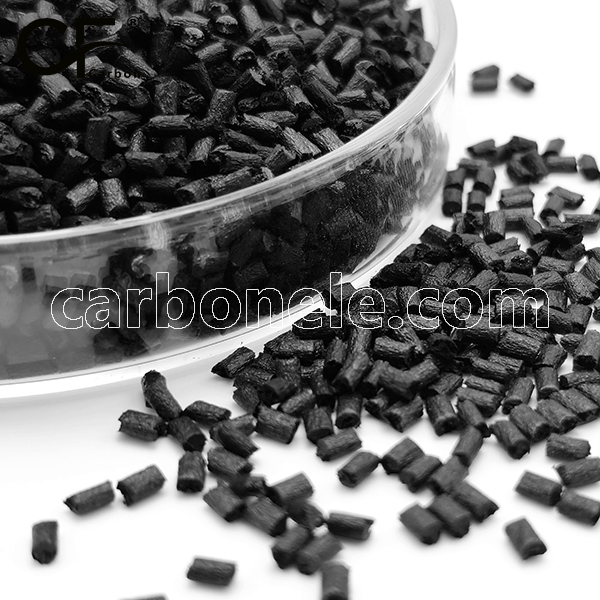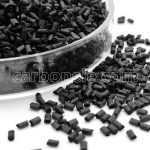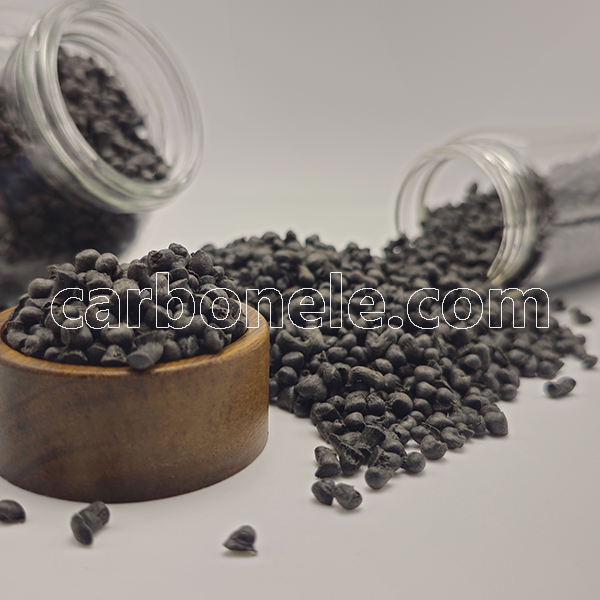
Carbon Fiber Nylon 612 PA612 CF Plastic Raw Material Granules
PA612 CF Plastic Raw Material composite material, with its diverse composition, different types of carbon fibers, excellent series of products and outstanding main properties, has a wide range of application prospects.
- Manufacturer: Carbon New Material
- OEM/ODM: Acceptable
- Color: Black
- Free Samples: ≤25kgs
- MOQ: 100kgs
- Port: Xiamen
- Model: PA612-CF-BCA3
- Fillers: Carbon fiber
Carbon Fiber Nylon 612 PA612 CF Plastic Raw Material Granules
PA612 CF mainly comprises two components:
– Matrix Material: Polyamide 612 (PA612) forms the matrix, endowing the material with basic physical and chemical traits like some flexibility and chemical resistance.
– Reinforcing Phase: Carbon fiber (CF) is the reinforcing part. Its content usually varies within a range. Common contents are 10%, 20%, 30%, 50%, 70% etc. Different contents significantly affect the material’s final properties. Generally, higher CF content leads to more obvious improvements in strength, stiffness etc.
I. Long and Short Carbon Fiber Types
– Long Carbon Fibers: Long carbon fibers are capable of considerably augmenting the strength and stiffness of the material within specific directions. Once the material is exposed to external forces, these long carbon fibers can proficiently carry and convey loads, endowing the material with remarkable resistance to deformation in the corresponding direction. Consequently, they are frequently employed in application situations where there are stringent requirements regarding directional strength.
– Short Carbon Fibers: Short carbon fibers can make the performance of the material more evenly distributed. They have relatively good dispersion in the matrix, which helps to improve the overall stability and comprehensive performance of the material. Moreover, the presence of short carbon fibers makes the material easier to handle during the processing, with good processing performance.
II. Series of Products
| Product Series | Carbon Fiber Content | Main Characteristics | Typical Applications |
|---|---|---|---|
| PA612 CF10
PA612 LCF10 |
10% | Moderately enhances strength and stiffness while maintaining PA612 matrix properties. | Ordinary industrial components. |
| PA612 CF20
PA612 LCF20 |
20% | Significantly improved mechanical properties (higher tensile and bending strength). | Automotive components, electronic device housings. |
| PA612 CF30
PA612 LCF30 |
30% | Further enhanced strength and stiffness, can withstand greater forces and complex stress. | Aerospace small structural components, high-end mechanical equipment key parts. |
| PA612 CF40
PA612 LCF40 |
40% | Even stronger mechanical performance, higher tensile and bending strengths. | High-performance sports equipment, energy sector critical components. |
| PA612 CF50
PA612 LCF50 |
50% | Remarkable strength and stiffness, withstands substantial loads. | Advanced aerospace components, high-speed transportation vehicle parts, specialized industrial machinery. |
| PA612 CF60
PA612 LCF60 |
60% | Exceptional strength and rigidity, withstands extremely high forces. | Space exploration equipment key components, high-performance military hardware, ultra-precision industrial manufacturing. |
Note: Other series of PA612 CF products. For example, PA612 CF-6S, which features high softness and high transparency, is used in medical and food packaging with various processing methods such as film extrusion, blown film, and cast film. Polyimide PA612-CF is a carbon fiber-reinforced filament material with low moisture absorption, good mechanical properties, and reliable printing, and it comes in different diameters and weights. Additionally, there are blended series of PA612 CF with other materials. The PAMXD6 + PA612 + CF is suitable for thin-walled products that require high dimensional accuracy and high performance, while the PA66 + PA612 + CF can be used in structural support components in fields like automobiles and power tools.
III. Main Properties
– Mechanical Properties: The material demonstrates remarkable mechanical characteristics, particularly notable for its excellent tensile and bending strength. Owing to the reinforcement provided by carbon fibers, it can effectively withstand tensile and bending deformations when encountering external forces, thereby guaranteeing the structural integrity of the product throughout its usage.
– Heat Resistance: It possesses favorable heat resistance capabilities, enabling it to function stably within a specific high-temperature environment without experiencing significant performance deterioration. This allows it to be employed in certain devices or components that are required to operate under relatively high-temperature circumstances.
– Chemical Resistance: It exhibits good resistance against chemical substances. It can fend off the erosion caused by numerous common chemicals like acid and alkali solutions. This property widens the application scope of the material, making it suitable for use in various industrial fields with diverse chemical environments.
– Dimensional Stability: The material enjoys excellent dimensional stability. Irrespective of different environmental factors such as temperature and humidity, it can ensure that the product retains its precise shape and dimensional precision. This is of particular significance for the manufacturing of some precision components where high demands for dimensional accuracy are imposed.
If you want more details about PPA CF, please click here.
Contact Us
If you want to obtain information such as product specifications, performance, and price, choose a suitable product according to your own needs. Meanwhile, you can ask the manufacturer to provide samples for testing to ensure that the material meets your usage requirements. If you are interested in purchasing this composite material, please contact the manufacturer Carbon (Xiamen) New Material directly.

Frequently Asked Questions
Carbon (Xiamen) New Material Co., Ltd. aims to provide buyers with "one-stop" worry-free high-quality services. Here you can find all information about carbon fiber engineering plastics. If you still have questions, please send us an email for consultation!
-
How can I contact the manufacturer of a product that interests me?
When you find a product you are interested in, you can contact the manufacturer directly by sending an email and we will get back to you as soon as possible.
-
How do I find the products that interest me?
All you need to do is enter the keyword, product name in the search window and press the Enter key on your keyboard. Your search results page will then be displayed. You can also search within the product category pages on the home page. Each category is divided into subcategories, allowing you to refine your search and find products that interest you.
-
Where will I find a buying guide?
Please contact our after-sales service directly and we will provide you with a comprehensive operating guide.
-
What are CF Reinforced Thermoplastic Composites?
CF Reinforced Thermoplastic Composites are materials where carbon fibers are incorporated into a thermoplastic matrix. They combine the strength and stiffness of carbon fibers with the processability and recyclability of thermoplastics. For instance, they are used in automotive parts like bumper beams.
-
What are the benefits of CF Reinforced Thermoplastic Composites over traditional composites?
The key benefits include faster production cycles, easier recyclability, and better impact resistance. They also offer design flexibility. An example is in the manufacturing of consumer electronics casings where complex shapes can be achieved more easily.
-
How are CF Reinforced Thermoplastic Composites processed?
Common processing methods include injection molding, extrusion, and compression molding. Injection molding is widely used for mass production. For example, in the production of small components for the medical industry.
-
What industries use CF Reinforced Thermoplastic Composites?
They are utilized in aerospace, automotive, medical, and sports equipment industries. In aerospace, they can be found in interior components. In the medical field, they might be used in prosthetics.
-
How does the carbon fiber content affect the properties of the composites?
Higher carbon fiber content generally leads to increased strength and stiffness but may reduce ductility. A moderate content is often balanced for specific applications. For example, a higher content might be preferred in structural parts of a race car.
-
What are the challenges in using CF Reinforced Thermoplastic Composites?
Challenges include higher material costs, complex processing equipment requirements, and ensuring uniform fiber dispersion. Issues with adhesion between the fibers and the matrix can also arise. An example is in achieving consistent quality in large-scale production.
























